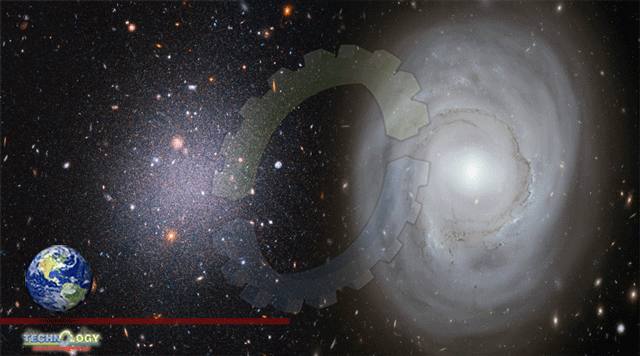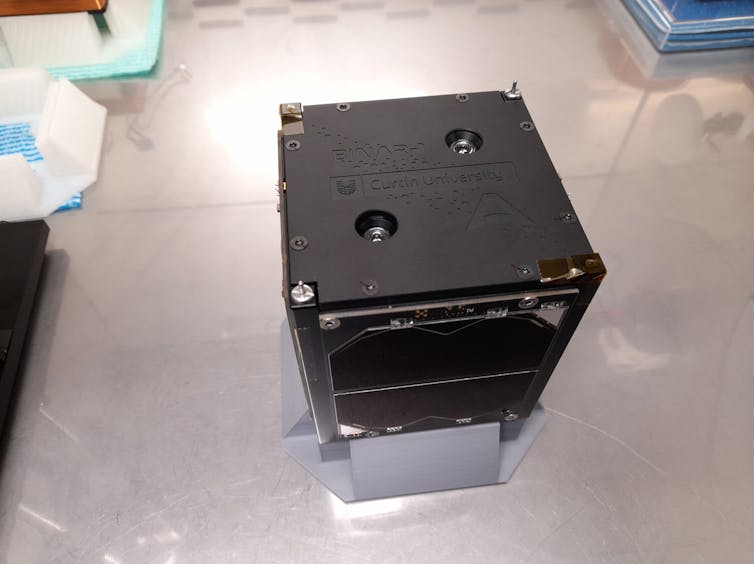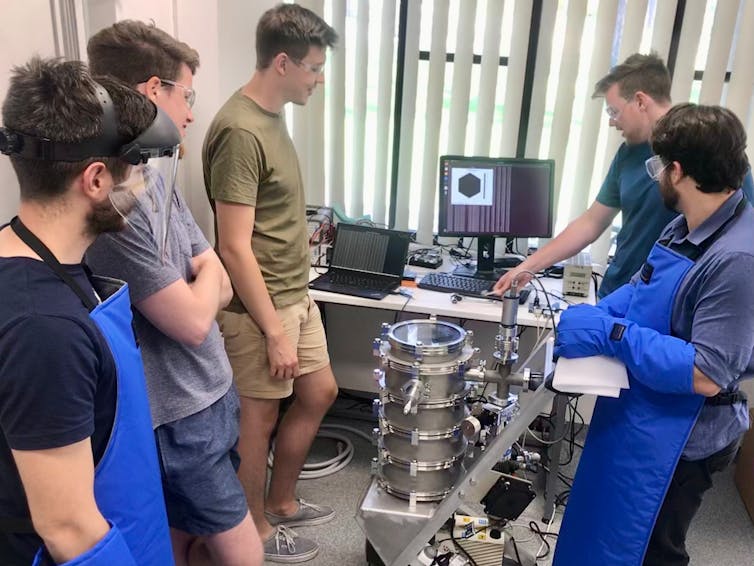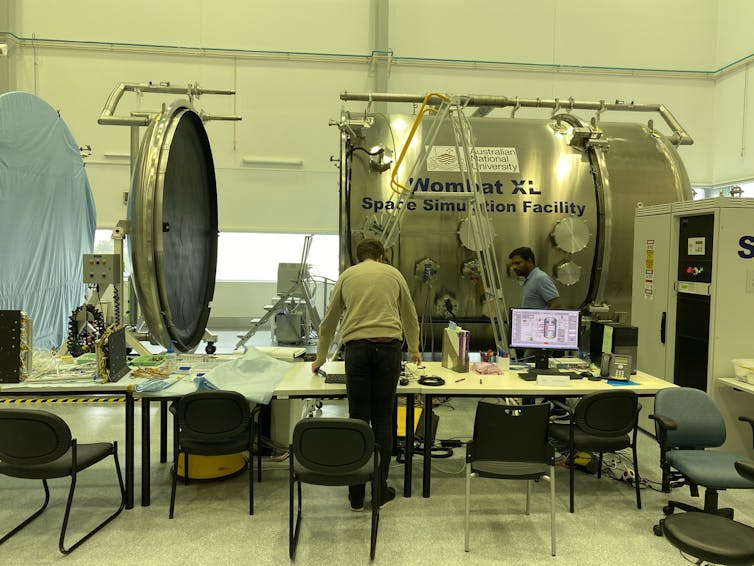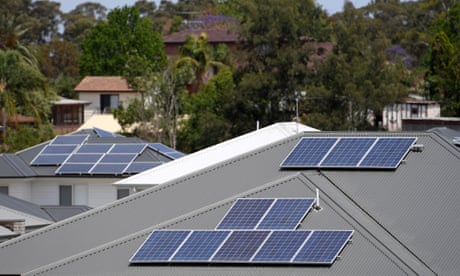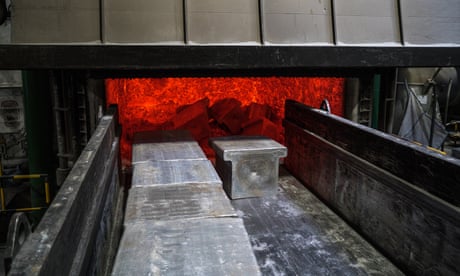The city's aiming to install 10,000 public charging ports by 2030
Samantha Beattie · CBC News · Posted: Aug 22, 2021

The City of Toronto is testing 17 on-street charging stations for electric vehicles as part of a one-year pilot project. (Robert Krbavac/CBC)
If Toronto wants to reach its ambitious goal of having all residents driving electric vehicles by 2050, it had better hit the accelerator on its infrastructure plans, critics say.
The city's aiming to install 3,000 charging ports curb-side and in public parking lots by 2025 and 10,000 by 2030, according to its electric vehicle strategy. But right now, it has less than 1,000, the database ChargeHub reports.
A pilot project launched last year has seen the city install 17 on-street charging stations, but far more ambitious policies are needed to convince residents to buy in, said The Atmospheric Fund's Ian Klesmer.
"It's really important to meet these goals in order to have a network of reliable and convenient chargers that Torontonians can use to reap the full benefits of electric vehicles," Klesmer said.
He said a steady uptake in electric vehicles is "absolutely essential" for Toronto, and other cities, to hit its target of net-zero carbon emissions by 2050.
"The faster we can electrify our fleet of cars, the faster we can dramatically reduce carbon emissions, which will lead to a much cleaner and healthier city," he said.
The city told CBC News it is following council's direction and exploring other ways to support electric vehicle sharing fleets, including reducing permitting fees. It's also considering providing incentives for residents and companies to install charging infrastructure on their properties.
Montreal invests in charging stations
Coun. Mike Layton, who represents Ward 11, University-Rosedale, agreed Toronto has a lot of ground to cover, especially compared to other major Canadian cities like Montreal.
Mayor Valerie Plante announced this week the country's second largest city is investing $885 million over three years to electrify its transportation networks. That includes doubling the number of charging stations to 2,000 by the end of 2025 and charging electric car owners less in parking fees.
"What we want to show today is how serious we are in encouraging, supporting, rewarding people that are buying an electric car," Plante told reporters Monday.
Toronto is well positioned to catch up to Montreal and become a North American leader, said Layton, who's pushing for the city to take a more aggressive approach. The city owns both the hydro infrastructure to fuel the cars and parking lots to house them.

If Toronto wants to reach its ambitious goal of having all residents driving electric vehicles by 2050, it had better hit the accelerator on its infrastructure plans, critics say.
The city's aiming to install 3,000 charging ports curb-side and in public parking lots by 2025 and 10,000 by 2030, according to its electric vehicle strategy. But right now, it has less than 1,000, the database ChargeHub reports.
A pilot project launched last year has seen the city install 17 on-street charging stations, but far more ambitious policies are needed to convince residents to buy in, said The Atmospheric Fund's Ian Klesmer.
"It's really important to meet these goals in order to have a network of reliable and convenient chargers that Torontonians can use to reap the full benefits of electric vehicles," Klesmer said.
He said a steady uptake in electric vehicles is "absolutely essential" for Toronto, and other cities, to hit its target of net-zero carbon emissions by 2050.
"The faster we can electrify our fleet of cars, the faster we can dramatically reduce carbon emissions, which will lead to a much cleaner and healthier city," he said.
The city told CBC News it is following council's direction and exploring other ways to support electric vehicle sharing fleets, including reducing permitting fees. It's also considering providing incentives for residents and companies to install charging infrastructure on their properties.
Montreal invests in charging stations
Coun. Mike Layton, who represents Ward 11, University-Rosedale, agreed Toronto has a lot of ground to cover, especially compared to other major Canadian cities like Montreal.
Mayor Valerie Plante announced this week the country's second largest city is investing $885 million over three years to electrify its transportation networks. That includes doubling the number of charging stations to 2,000 by the end of 2025 and charging electric car owners less in parking fees.
"What we want to show today is how serious we are in encouraging, supporting, rewarding people that are buying an electric car," Plante told reporters Monday.
Toronto is well positioned to catch up to Montreal and become a North American leader, said Layton, who's pushing for the city to take a more aggressive approach. The city owns both the hydro infrastructure to fuel the cars and parking lots to house them.

In the first quarter of this year, 6.5 per cent of new vehicles, over 9,000 registered, were battery powered, plug-in hybrid or hybrid vehicles, Statistics Canada says. (Hannah Yoon/Canadian Press)
Drivers are gradually buying more electric cars. In the first quarter of this year, 6.5 per cent of new vehicles, over 9,000 registered, were battery powered, plug-in hybrid or hybrid vehicles — almost doubling from 3.9 per cent the same quarter of 2020, according to recent data from Statistics Canada.
The city estimates Toronto accounts for 20 per cent of all electric vehicles in the province. In 2018, there were more than 6,000 registered in total, according to a staff report.
The federal government is pushing for more dramatic increases. It announced in June it wants to see every new car and light-duty truck be emission-free by 2035.
But Olivier Trescases, the director of the University of Toronto's Electric Vehicle Research Centre, said the price of an electric car, which costs more upfront, is deterring people from buying them and it's up to the provincial and federal governments to provide more incentives.
He said the city has limited tools "to drive this change and is pretty cash strapped ... Ultimately this is a huge federal and global issue."
What experts say Canada needs to do to become a leader in the electric vehicle industry
Drivers are gradually buying more electric cars. In the first quarter of this year, 6.5 per cent of new vehicles, over 9,000 registered, were battery powered, plug-in hybrid or hybrid vehicles — almost doubling from 3.9 per cent the same quarter of 2020, according to recent data from Statistics Canada.
The city estimates Toronto accounts for 20 per cent of all electric vehicles in the province. In 2018, there were more than 6,000 registered in total, according to a staff report.
The federal government is pushing for more dramatic increases. It announced in June it wants to see every new car and light-duty truck be emission-free by 2035.
But Olivier Trescases, the director of the University of Toronto's Electric Vehicle Research Centre, said the price of an electric car, which costs more upfront, is deterring people from buying them and it's up to the provincial and federal governments to provide more incentives.
He said the city has limited tools "to drive this change and is pretty cash strapped ... Ultimately this is a huge federal and global issue."
What experts say Canada needs to do to become a leader in the electric vehicle industry
All new cars, light-duty trucks sold in Canada will be zero emissions by 2035, Liberals say
"Range anxiety" also still exists, but big urban centres like Toronto can help address, said the CAA's Theresa Di Felice, an assistant vice president of government and community relations. Drivers worry if they'll be able to find a charging station during a trip, especially if they don't have a driveway and depend on public infrastructure.
But Ontario and its municipalities are facing a chicken-or-egg situation, she said.
"Do you need a critical mass of owners to supply the infrastructure, or do you need to put the infrastructure in place so it encourages people to make that purchasing decision?" Di Felice said.
"We are still having that conversation even though it's been a few years."






